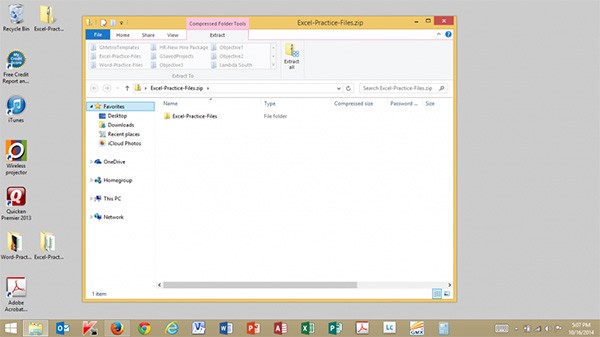
It seems inevitable that our files sizes are growing larger while our computer software is growing more complex. Remember the days of floppy disks that were 500K? Nowadays we are seeing hard drives that hold terabytes of information and thumb drives that hold gigabytes.
The real genius will the one who solves the problem of making computer files smaller while keeping the software advanced.
To help you handle large file sizes, we have something called a .ZIP archive. You can tell you’ve been sent a .ZIP archive because the file name will end in .ZIP.
.ZIP files are great because they do two things very well:
- ZIP archives compress file sizes and make it easier to store and send or receive computer documents.
- ZIP archives are also a great way to group and store related sets of files, such as photographs from a trip or computer files related to your business.
In fact, one of the primary reason people create .ZIP archives is to speedily send files via email and other electronic transfer.
Creating .ZIP Archives is Easy
If you are new to this idea, the good news is that .ZIPping is a feature built into most modern computer operating systems. If you’re not familiar with what an operating system is, it is what most people refer to when they say Macintosh or Windows. Follow these simple steps to .ZIP a folder or an individual file:
| Windows | Macintosh |
|---|---|
|
|
What do I do with a .ZIP archive when I get it?
For starters, hang on to it. It is usually easier to store a .ZIP archive than it is to store the original uncompressed contents. But if you want to see what is inside the .ZIP archive, you’ll be glad to know that it’s easy to decompress them.
| Windows | Macintosh |
|---|---|
|
|
A Caution for Windows Users
We’re all pretty-well-trained to double-click on a file name to get it to open. In fact, you’ll notice in the instructions that that is all Macintosh users have to do. Windows users who double-click, will get a different result.
Instead of the .ZIP archive decompressing, Windows users who double-click will be taken to a special tab in Windows Explorer called — of all things — Compressed Folder Tools Extract. The reason this can be confusing is that you can see inside the .ZIP archive and might be tempted to just double-click on a file-name to open it. Unfortunately, this sometimes works with limited results. You might be able to see the final document, but you will quickly encounter problems with changing, editing or saving documents handled this way. The reason why is that the base document is still compressed and sitting in the .ZIP archive.
If you are a Windows user who makes the mistake of double-clicking on the archive name, just click on the files you want to work with and choose Extract All from the Compressed Folder Tools Extract tab.
If you’re not sure what a Windows Explorer window is or what I’m talking about, just check out the image below for more information. For extra credit, you can see a perfect example of the .ZIP icon sitting right beside my Recycle Bin.
For more information about the .ZIP archive format and its uses, check out this great article on Wikipedia.




